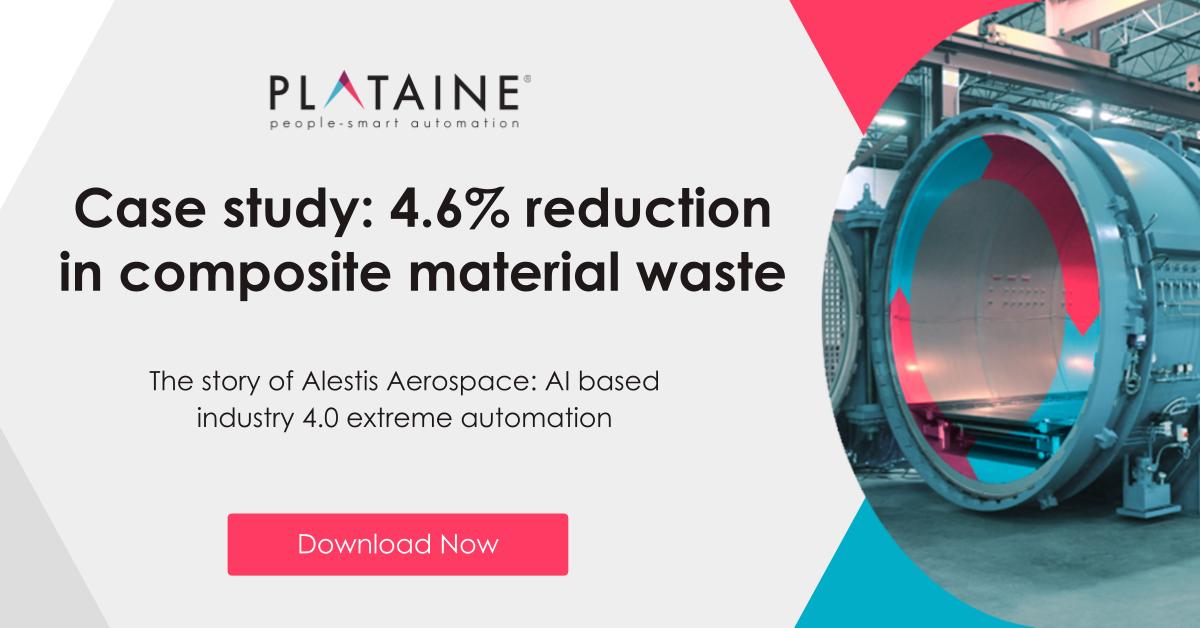In the dynamic world of manufacturing, achieving optimal production efficiency while minimizing costs is the ultimate goal. One of the key metrics that plays a pivotal role in this pursuit is manufacturing yield. The concept of yield improvement in manufacturing has gained significant traction in recent years, as companies look for ways to enhance their operations and remain competitive in a global market. Furthermore, integrating sustainability into yield improvement strategies has become not just a moral imperative but a business necessity. Sustainable manufacturing practices not only contribute to environmental conservation by reducing waste and utilizing resources more efficiently but also bolster long-term profitability and resilience against market fluctuations. This approach underscores the importance of creating production processes that are as eco-friendly as they are economical. In this blog post, we will explore the importance of understanding yield in manufacturing, discuss the profound impact it has on costs, delve into its relationship with product quality, and provide strategies on how to improve yield in manufacturing, all while emphasizing sustainable practices. Let’s unravel the potential of this often underestimated metric and uncover how it can transform your manufacturing processes into models of efficiency and guardians of our planet.
Understanding Yield in Manufacturing:
Before we dive into the intricacies of yield improvement, let’s begin by understanding what manufacturing yield actually means. let’s break down the concept of manufacturing yield in a simple way. Imagine you’re baking cookies. You start with a bunch of ingredients like flour, sugar, eggs, and chocolate chips. Your goal is to make as many delicious cookies as possible without wasting any of your ingredients. That’s kind of like what happens in manufacturing.
Manufacturing yield is like keeping track of how good you are at making those cookies without wasting your ingredients. It’s a way of measuring how efficient your cookie-making process is.
Here’s how we figure it out:
– First, you need to know how many perfect cookies you made. These are the cookies that turned out just right, exactly how you wanted them.
– Next, you look at how many cookies you planned to make when you started. This is all the cookies you wanted to bake.

To calculate the manufacturing yield, you use this simple formula:
Manufacturing Yield (%) = (Good Cookies / All Cookies You Produced) x 100
If you get a high percentage, it means you did a great job. You didn’t waste too many ingredients, and most of your cookies turned out perfect.
But if you have a low percentage, it’s like saying something went wrong along the way. Maybe some ingredients got wasted, or your cookies didn’t turn out as you hoped.
So, in a factory or production line, when the manufacturing yield is high, it tells us that the process is running efficiently, saving resources, and making more products that meet quality standards. But when the yield is low, it’s a sign that something needs fixing to avoid wasting resources and making products that might not be up to snuff.
The Impact of Yield Improvement on Costs:
The correlation between yield improvement and cost reduction in manufacturing is indisputable. As manufacturing yield increases, the associated costs decrease, leading to enhanced profitability and competitiveness. Here are some ways in which improving yield can directly impact costs:
- Reduced Material Waste: When you improve yield, you inevitably reduce the amount of raw materials wasted during production. Lower material waste means lower material costs, contributing significantly to cost savings.
- Decreased Energy Consumption: Efficient manufacturing processes often require less energy. As yield improves, energy consumption decreases, leading to lower utility bills and reduced environmental impact.
- Labor Optimization: Higher yield typically means less rework and fewer defects, resulting in optimized labor utilization. This can lead to reduced labor costs and improved workforce efficiency.
- Inventory Management: Improved yield can lead to more accurate production forecasts and better inventory management, reducing carrying costs and the risk of overstocking or understocking.
- Enhanced Equipment Efficiency: A focus on yield improvement encourages regular maintenance and optimization of manufacturing equipment, prolonging its lifespan and reducing repair and replacement costs.
- Lower Quality Assurance Costs: With fewer defects, quality assurance processes become more streamlined, reducing the need for extensive testing and inspection, which can be costly.
- Sustainability and Waste Reduction: Elevating yield not only minimizes waste production but also aligns with sustainability efforts by using materials and resources more efficiently. This reduces the environmental footprint of manufacturing activities and supports compliance with increasing regulatory requirements on waste reduction and sustainability.

The positive impact of yield improvement on manufacturing costs cannot be overstated. By optimizing yield, companies can effectively manage their expenses, increase profitability, and gain a competitive edge in the market.
Quality and Yield Improvement in Manufacturing:
Quality and yield improvement are closely intertwined in manufacturing. Higher yield doesn’t only mean cost savings; it also reflects a commitment to producing high-quality products consistently. Here’s how improving yield can enhance product quality:
Consistency: When we talk about a higher yield in manufacturing, it essentially means that more products meet the predefined quality standards consistently. This is a critical aspect for any manufacturer aiming to establish a reputable brand and gain the trust of customers.
Imagine a company that consistently produces a high yield of products meeting quality standards. This translates into a customer experience where they can rely on the company’s products without worrying about variations in quality. Such consistency is valued in industries like pharmaceuticals, automotive, and electronics, where product quality can have far-reaching consequences.
Lower Defect Rates: As yield improves, the rate of defective products naturally decreases. Fewer defects lead to a cascade of benefits. First and foremost, it means fewer customer complaints, returns, and warranty claims.
Lower defect rates not only save costs associated with returns and replacements but also prevent potential damage to the company’s reputation. Customers are more likely to stay loyal to a brand that consistently delivers products free from defects. High defect rates, on the other hand, can tarnish a company’s image and result in long-term customer distrust.
Better Process Control: Yield improvement often necessitates a closer look at process control and monitoring. Manufacturers need to closely track production variables, ensuring that they remain within specified limits. This tighter control over processes is instrumental in reducing the chances of quality deviations.
For example, in semiconductor manufacturing, maintaining precise control over temperature, humidity, and other environmental factors is critical to ensuring the quality and yield of microchips. By improving yield, manufacturers are compelled to invest in more advanced process control systems, ultimately enhancing the overall quality of their products.
Continuous Improvement: Pursuing yield improvement fosters a culture of continuous improvement within the organization. When teams actively work towards increasing yield, they become more proactive in identifying and addressing quality issues.
This culture of continuous improvement extends beyond just yield and touches every aspect of the manufacturing process. Employees become more vigilant about spotting potential quality concerns, and they take immediate corrective actions. As a result, the company’s products continuously evolve and become better in terms of quality, safety, and performance.
In essence, the relationship between quality and yield improvement in manufacturing is symbiotic. Improving yield not only leads to cost savings but also reflects a dedication to producing high-quality products consistently. It fosters a culture of excellence within the organization, resulting in not only more efficient processes but also a stronger reputation and customer trust. As manufacturers strive to improve their yield, they simultaneously enhance the quality of their products, ensuring long-term success and competitiveness in the market.
Strategies for Yield Improvement in Manufacturing:
Now that we’ve established the significance of yield improvement in manufacturing, let’s explore some practical strategies to achieve it:
Process Optimization: Begin by analyzing your manufacturing processes. Identify bottlenecks, inefficiencies, and areas where yield can be improved. Invest in technology and automation to streamline operations.
Data Analytics: Implement data analytics tools to monitor and analyze production data in real-time. These insights can help identify trends, anomalies, and areas for improvement.
Quality Control Measures: Enhance your quality control measures to reduce defects and ensure that a higher percentage of products meet quality standards. Implement Six Sigma or Total Quality Management (TQM) principles.
Employee Training: Train your workforce on best practices, safety measures, and quality standards. Engaged and skilled employees play a significant role in yield improvement.
Preventive Maintenance: Regularly maintain and calibrate machinery and equipment to prevent breakdowns and defects that can hamper yield.
Lean Manufacturing: Adopt lean manufacturing principles to eliminate waste, improve efficiency, and maximize yield.
Supplier Collaboration: Collaborate closely with suppliers to ensure the consistent quality of raw materials, reducing the risk of defects in the manufacturing process.
Continuous Monitoring: Continuously monitor and track key performance indicators related to yield, and set goals for improvement.
To conclude, in today’s competitive manufacturing landscape, the power of yield improvement cannot be understated. Understanding yield, its impact on costs, its relationship with product quality, and implementing effective strategies for improvement can pave the way for enhanced efficiency, reduced expenses, and increased profitability. Companies that embrace yield improvement as a central tenet of their operations position themselves for long-term success and resilience in an ever-evolving industry. So, seize the opportunity to unlock the potential of yield improvement in your manufacturing processes, and watch your organization thrive in the face of challenges and opportunities alike.
Want to get a delicious cookie recipe to improve your yield? Contact our experts!









